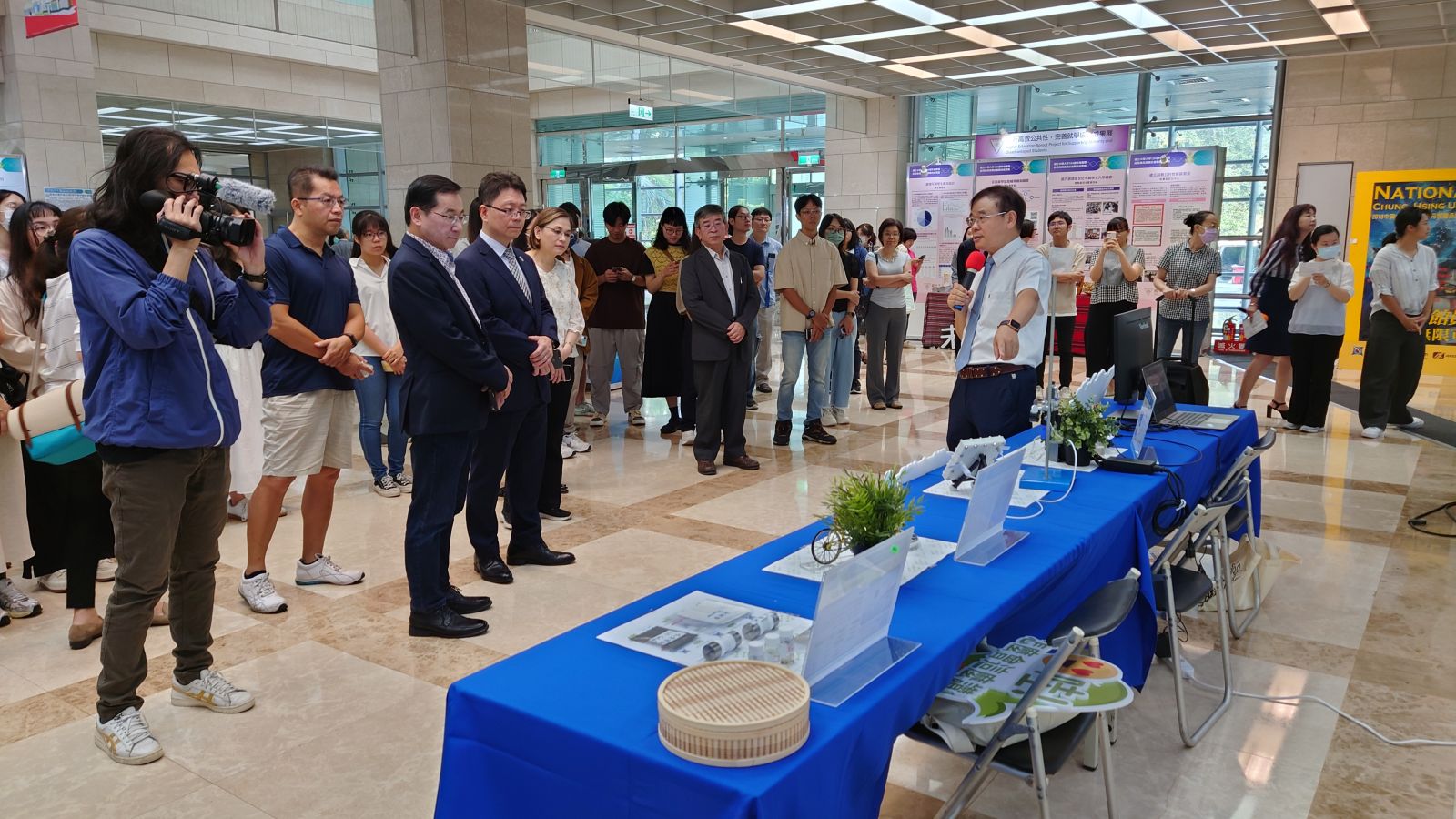2024-04-15Activity
iSNR participated in NCHU’s exhibition of Higher Education SPROUT Project

Celebrating its 104th anniversary, National Chung Hsing University (NCHU) held the opening ceremony of the "Exhibition of Higher Education SPROUT Project" on October 25th. Through posters and physical displays, the exhibition showcases a variety of pioneering research and development technologies and industry-academia cooperation achievements that have put NCHU at the forefront in teaching, research, and social services in recent years. The exhibition is located on the first floor of the library and will run until October 30th.
Since 2018, NCHU has been awarded the "Ministry of Education's Higher Education SPROUT Project," and its performance has been outstanding year after year. From 2020 to the present, it has consistently ranked fifth in national funding for four consecutive years. There are four Specialty Area Research Centers in NCHU: the Advanced Plant and Food Crop Biotechnology Center, Innovation and Development Center of Sustainable Agriculture, the iEGG and Animal Biotechnology Research Center, and Innovative Center on Sustainable Negative-Carbon Resources (iSNR).
Directed by Professor Kuan-Jiuh Lin, iSNR was officially unveiled in September of this year. It proposes to establish the world's first "Proof test of carbon-neutral sandbox" at NCHU to advance forward-looking research on net-zero technologies. The center focuses on four key research areas: negative-carbon resources, energy breakthrough and manufacturing, green and sustainable resources, sustainable cloud computing platform. Additionally, the carbon neutrality science baseline is crucial for advancing Taiwan's net-zero pathway. Moving from net-zero commitments to actual implementation requires not only the integration of many technological elements and policy coordination but also bridging with internationally visionary enterprises. Through the voluntary carbon rights green living movement, combined with the global patented wisdom traffic carbon rights calculation, the ultimate goal is to implement a commercial model that reduces annual carbon dioxide emissions by 100,000 tons.


Since 2018, NCHU has been awarded the "Ministry of Education's Higher Education SPROUT Project," and its performance has been outstanding year after year. From 2020 to the present, it has consistently ranked fifth in national funding for four consecutive years. There are four Specialty Area Research Centers in NCHU: the Advanced Plant and Food Crop Biotechnology Center, Innovation and Development Center of Sustainable Agriculture, the iEGG and Animal Biotechnology Research Center, and Innovative Center on Sustainable Negative-Carbon Resources (iSNR).
Directed by Professor Kuan-Jiuh Lin, iSNR was officially unveiled in September of this year. It proposes to establish the world's first "Proof test of carbon-neutral sandbox" at NCHU to advance forward-looking research on net-zero technologies. The center focuses on four key research areas: negative-carbon resources, energy breakthrough and manufacturing, green and sustainable resources, sustainable cloud computing platform. Additionally, the carbon neutrality science baseline is crucial for advancing Taiwan's net-zero pathway. Moving from net-zero commitments to actual implementation requires not only the integration of many technological elements and policy coordination but also bridging with internationally visionary enterprises. Through the voluntary carbon rights green living movement, combined with the global patented wisdom traffic carbon rights calculation, the ultimate goal is to implement a commercial model that reduces annual carbon dioxide emissions by 100,000 tons.







